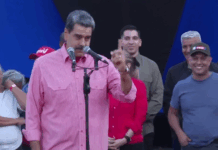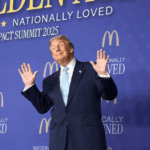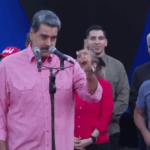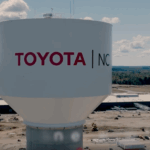
At the 2024 McDonald’s Impact Summit, President Donald Trump did something only he could do—blend fast food, populist charm, and economic statistics into a moment that was both theatrical and data-driven. In a speech that managed to be light-hearted and policy-rich, Trump leaned into his everyman appeal while touting the measurable progress of his second term.
The president opened with a trademark jab and a grin: “I’m honored to stand before you as the very first former McDonald’s fry cook ever to become President of the United States.” He was, of course, referring to the now-famous 2024 campaign stop where he worked a fryer and drive-thru window at a Pennsylvania McDonald’s, turning a media moment into a cultural one.
The crowd roared again when he teased Vice President Kamala Harris, claiming his thirty minutes at McDonald’s was “longer than she ever worked there.” According to Trump, McDonald’s insiders confirmed she had no stint under the Golden Arches—naturally, he couldn’t resist the dig.
But beyond the fast food theatrics, the president pivoted to substance. Trump reminded the audience how he’d served McDonald’s not just to football champions in the White House, but also on Trump Force One and Air Force One.
In an unexpected twist, he claimed even Robert F. Kennedy, Jr.—now Secretary of Health and Human Services and a longtime advocate for clean living—caved to the temptation of a Big Mac. “He ate the whole thing,” Trump said, to laughs.
The mood shifted, however, when Trump transitioned to the state of the American worker. “There’s still a lot of work to do,” he acknowledged, “but we’re making tremendous progress.” And by the numbers, that progress is hard to ignore. According to data from the Department of the Treasury, 1.9 million more native-born Americans are employed than when Trump resumed office. In contrast, employment for foreign-born workers has dropped, which dovetails with his administration’s aggressive deportation strategy.
But the real headline: wages for hourly workers are rising at the fastest pace in 60 years. In the first five months of his second term, blue-collar workers have seen a nearly 2% increase in real wage growth—a stark departure from the wage stagnation and negative real income growth that plagued much of the Biden administration.
To date, Trump remains the only president since Nixon to record positive blue-collar wage growth so early in his term—1.3% in his first and now 1.7% in his second.
Even with inflationary pressure still lingering, Trump pointed to modest improvements in prices for energy and food staples like eggs. “Prices are starting to come down,” he said. “Not fast enough, but they’re coming down. And we’re going to keep pushing.”
Then, right on cue, he closed with the now-iconic Trump dance—a wordless finale that signals confidence, defiance, and a sense that, under his leadership, the show isn’t over. Far from it.








